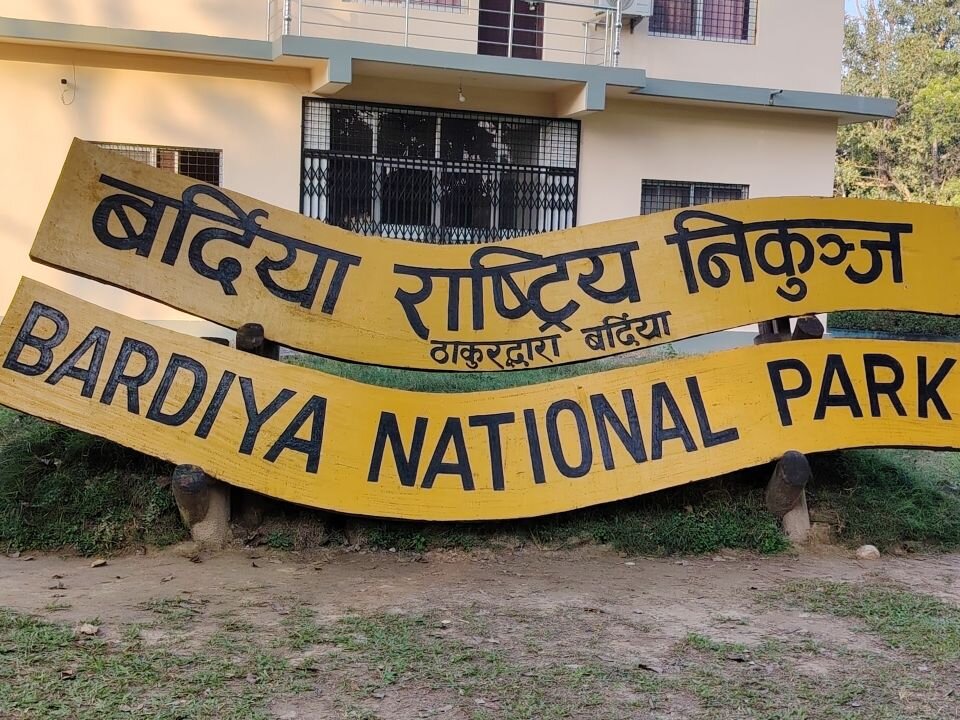Premium Only Content

Bardiya National Park
Bardiya National Park, situated in the western Terai region of Nepal, is one of the country’s most extensive and ecologically diverse protected areas. Covering an area of approximately 968 square kilometers, the park lies in Bardiya District of Lumbini Province and was officially established in 1988. Before its designation as a national park, the area was a royal hunting reserve known as the Bardiya Wildlife Reserve, which was created in 1976. Its transformation into a national park marked a significant milestone in Nepal’s efforts to conserve the rich biodiversity of the lowland Terai ecosystem.
The park is bordered by the Karnali River to the west, while the Babai River flows through its core, creating a mosaic of habitats that support a wide variety of flora and fauna. The landscape is dominated by dense sal (Shorea robusta) forests, interspersed with grasslands, riverine forests, and wetlands. This combination of habitats provides a refuge for some of the most endangered wildlife species in Asia. Bardiya is particularly famous for its population of Royal Bengal tigers, one-horned rhinoceroses, Asian elephants, gharial crocodiles, and Gangetic dolphins. It also shelters more than 400 species of birds, including the great hornbill, lesser adjutant stork, and bengal florican.
In addition to its ecological importance, Bardiya National Park holds significant cultural and social value. The area surrounding the park is home to the Tharu community, an indigenous ethnic group known for their unique traditions, dances, and harmonious relationship with nature. Their traditional lifestyle and knowledge systems contribute to sustainable resource use and help maintain the ecological balance of the region.
Bardiya offers rich opportunities for eco-tourism and wildlife observation, with jungle safaris, rafting on the Karnali River, and birdwatching among the most popular activities. Visitors may also encounter species such as spotted deer, wild boar, swamp deer, blue bull, and various species of monkeys. Despite its natural beauty and abundance of wildlife, Bardiya remains less commercialized than Chitwan National Park, giving visitors a more tranquil and authentic wilderness experience.
Today, Bardiya National Park stands as a symbol of Nepal’s commitment to biodiversity conservation and sustainable development. Through continued efforts in anti-poaching, community involvement, and habitat restoration, the park not only protects rare species but also supports the livelihoods and cultural heritage of local people. It remains a vital part of Nepal’s natural heritage — a sanctuary of life, culture, and beauty where the rhythm of the wild still beats strong.
-
 4:34
4:34
Legal Money Moves
5 days agoThe AI Panic: Are You Next?
5.13K9 -
 25:41
25:41
Robbi On The Record
2 days ago $26.80 earnedThe Billion-Dollar Lie Behind OnlyFans “Empowerment” (Her Testimony Will Shock You) | part II
46K53 -
 1:06:09
1:06:09
Man in America
17 hours agoExposing HAARP's Diabolical Mind Control Tech w/ Leigh Dundas
69.8K64 -
 1:47:16
1:47:16
Tundra Tactical
13 hours ago $111.18 earnedGlock Interview From Beyond The Grave//Whats the Future of Home Training??
56.3K12 -
 2:16:35
2:16:35
BlackDiamondGunsandGear
11 hours agoEBT Apocalypse? / Snap Down SHTF / After Hours Armory
24.5K13 -
 14:05
14:05
Sideserf Cake Studio
23 hours ago $17.95 earnedHYPERREALISTIC HAND CAKE GLOW-UP (Old vs. New) 💅
63.9K12 -
 28:37
28:37
marcushouse
1 day ago $10.17 earnedSpaceX Just Dropped the Biggest Starship Lander Update in Years! 🤯
32.3K14 -
 14:54
14:54
The Kevin Trudeau Show Limitless
3 days agoThe Hidden Force Running Your Life
118K27 -
 2:16:35
2:16:35
DLDAfterDark
12 hours ago $13.81 earnedIs The "SnapPocalypse" A Real Concern? Are You Prepared For SHTF? What Are Some Considerations?
34.1K14 -
 19:58
19:58
TampaAerialMedia
23 hours ago $10.52 earnedKEY LARGO - Florida Keys Part 1 - Snorkeling, Restaurants,
48.2K23